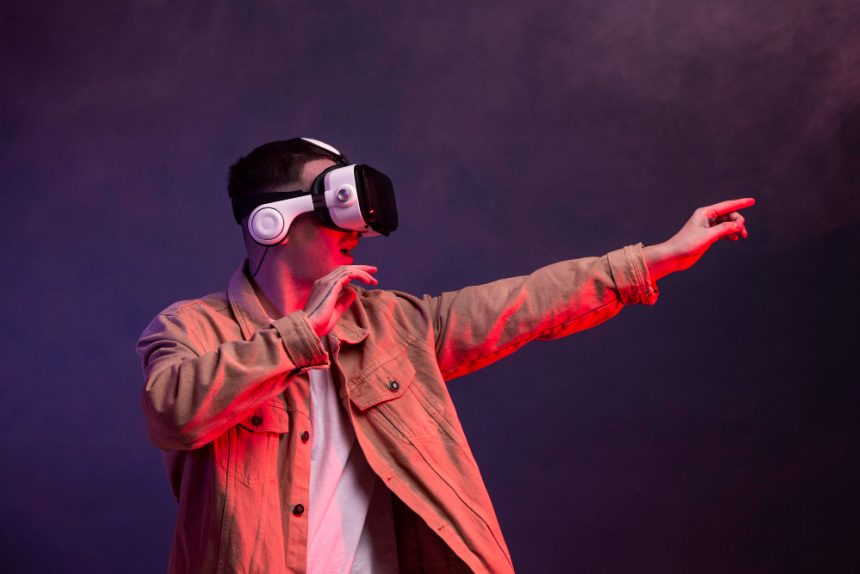In an age where digital technology is woven into every facet of our daily existence, the landscape of creativity is undergoing a profound transformation. No longer confined by traditional tools or physical limitations, artists, designers, and innovators are harnessing the power of cutting-edge digital platforms to explore new realms of expression. This confluence of art and technology is not only expanding the boundaries of imaginative pursuit but also reshaping the very fabric of the global artistic landscape.
One of the most notable developments is the advent of virtual reality (VR) and augmented reality (AR). These immersive technologies allow creators to craft environments that envelop audiences in multisensory experiences. Imagine walking through a digitally rendered forest, where every leaf and ray of sunlight can be manipulated to evoke specific emotional responses, or viewing an AR sculpture that appears to interact with the real world. This blend of reality and digital augmentation provides artists with unprecedented freedom to experiment, storytelling with greater depth and interactivity.
Artificial intelligence (AI) has also emerged as a groundbreaking tool for creative expression. AI algorithms are now capable of generating art, music, poetry, and even complex narratives, challenging traditional notions of authorship and originality. For instance, AI-powered platforms can analyze vast datasets of artistic styles and produce original works that reflect those influences while adding new twists. Artists are collaborating with AI to co-create artworks, pushing the boundaries of human-machine synergy and redefining what it means to be an artist.
Beyond individual projects, digital platforms facilitate collective creativity across borders. Online communities and collaborative tools enable artists from diverse backgrounds to share ideas, co-design projects, and participate in global exhibitions—all virtually. This democratization of artistic creation fosters cultural exchange and innovation, ensuring that creative expression in the 21st century is more inclusive and interconnected than ever before.
Furthermore, data-driven insights are revolutionizing how creators understand their audiences. By analyzing engagement metrics and socio-cultural trends, artists and brands can tailor content that resonates more deeply, creating personalized experiences that foster emotional connections. This approach not only enhances engagement but also broadens the scope for experimental and niche artistic endeavors, aligning creative pursuits with societal preferences and needs.
The integration of digital technology in art is also transforming industries beyond fine arts, influencing fields such as education, marketing, and entertainment. Interactive installations are used in museums to make historical events come alive, digital marketing campaigns utilize augmented reality to engage consumers in novel ways, and video games evolve into complex narrative art forms. The synergy between technology and creative expression is fueling a cultural renaissance that touches every aspect of modern life, making art more accessible, engaging, and immersive.
Harnessing Technology’s Potential: Innovative Strategies and Future Perspectives for Creative Professionals Navigating the Digital Age
As digital technology continues its rapid evolution, it presents both opportunities and challenges for creative professionals striving to stay relevant and innovative. Mastery of new tools—from artificial intelligence to blockchain—becomes imperative for those who wish to lead rather than follow in this dynamic landscape.
One promising approach is the integration of digital fabrication techniques such as 3D printing and laser cutting with traditional craftsmanship. This hybrid method allows artists to combine tactile authenticity with digital precision, resulting in novel forms and textures. For example, designers can create bespoke jewelry or architectural models that are both artisanal and technologically advanced, expanding the vocabulary of creative expression.
Artificial intelligence, particularly machine learning, is increasingly used for personalized content generation. Music algorithms compose melodies tailored to individual tastes, while AI-driven image generators produce customized visual assets for branding or storytelling. These tools enable creators to produce highly relevant and engaging content at scale, while also freeing up more time for conceptual development and artistic experimentation.
Remote collaboration platforms have revolutionized the way artists work together across geographic boundaries. Cloud-based tools allow seamless sharing of assets, real-time feedback, and collective brainstorming, fostering a global creative community. This interconnectedness not only accelerates project timelines but also exposes creators to diverse perspectives, enriching their work.
However, with these technological innovations come critical considerations. Ethical questions surrounding AI-generated art and intellectual property rights require deliberate reflection. Sustainability is also paramount—exploiting digital manufacturing responsibly to reduce waste and energy consumption. Accessibility remains a vital focus, ensuring that emerging tools do not widen existing inequalities but instead democratize creative opportunities for all.
Looking ahead, the future of creativity in the digital age is promising. Technologies such as extended reality (XR), neural interfaces, and advanced data analytics hold the potential to unlock entirely new forms of artistic engagement. As creators embrace these innovations with ethical awareness and an openness to experimentation, they will continue to shape a cultural landscape that is more inclusive, dynamic, and reflective of our interconnected world.
In conclusion, the marriage of digital technology and creative practice is expanding what we consider possible in art and design. By exploring and harnessing these innovative approaches, creative professionals can craft compelling experiences, foster cross-cultural collaborations, and push the boundaries of imagination—leading us into a future where technology and creativity coalesce to transform society’s artistic narrative.





